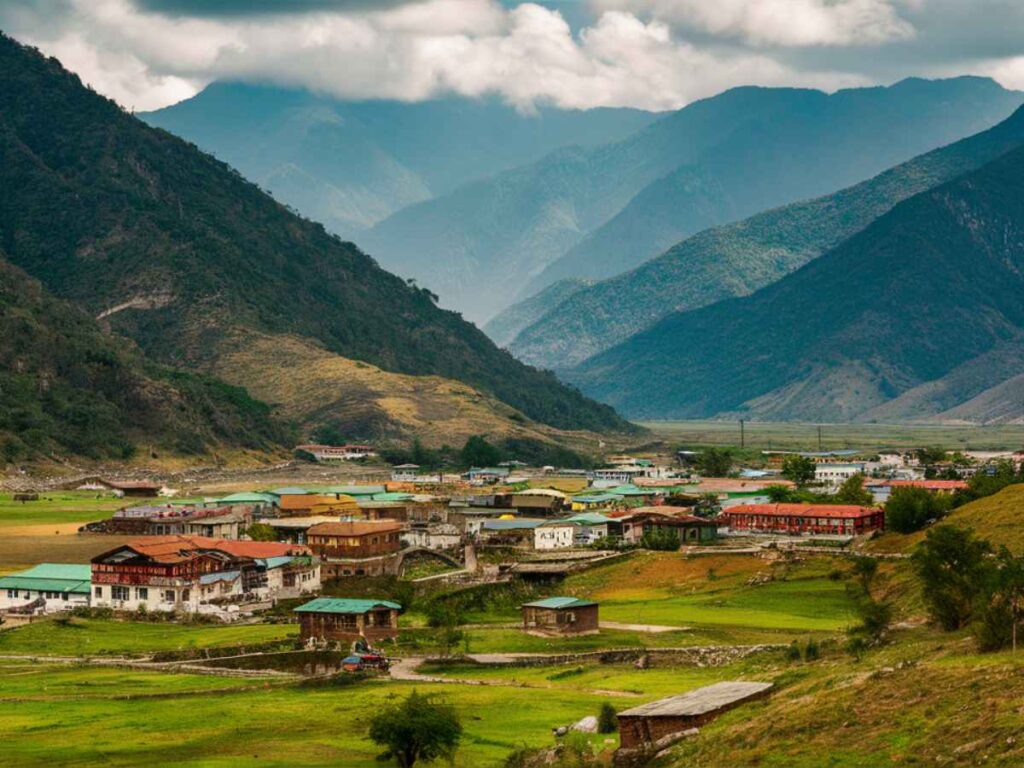Nestled in the serene mountains of Arunachal Pradesh, Ziro Valley is a destination that feels like stepping into another world. With its lush landscapes, vibrant culture, and tranquility, Ziro Valley remains one of India’s best-kept secrets. For travelers seeking an offbeat experience, this UNESCO World Heritage Site nominee offers a perfect mix of natural beauty and cultural richness.
History and Cultural Significance

Ziro Valley is home to the Apatani tribe, one of India’s oldest and most unique tribes. Known for their sustainable farming techniques and rich traditions, the Apatani people practice wet rice cultivation without relying on animals or machines. Their agricultural methods are not only efficient but also environmentally friendly.
Apatani Culture
- Facial Tattoos: The Apatani women were traditionally known for their unique facial tattoos and large nose plugs, a practice that has been discontinued but remains a part of their identity.
- Festivals: Ziro is famous for its festivals, particularly Myoko Festival in March (celebrating friendship and fertility) and Dree Festival in July (a harvest festival).
- Craftsmanship: The Apatani people excel in bamboo crafts and weaving, creating beautiful artifacts that are a must-buy for visitors.
How to Reach Ziro Valley

Reaching Ziro might seem challenging, but the journey is well worth it. Here’s how you can get there:
1. By Air
- Nearest Airport: Lilabari Airport in Assam, located about 123 km from Ziro.
- From Lilabari, you can hire a taxi or take a bus to Ziro. The drive takes around 4-5 hours.
- Another option is Dibrugarh Airport, which is 300 km away.
2. By Train
- The nearest railway station is Naharlagun, approximately 100 km from Ziro. Naharlagun is well connected to Guwahati and other major cities in the region.
- From Naharlagun, you can take a taxi or bus to Ziro Valley.
3. By Road
- Ziro is connected by well-maintained roads to major cities in Arunachal Pradesh and Assam.
- From Itanagar: It’s about 110 km and takes around 4 hours by car.
- From Guwahati: You can drive (450 km) or take a night bus to Naharlagun and then proceed to Ziro.
Travel Tip: Obtain an Inner Line Permit (ILP) online or from designated offices to enter Arunachal Pradesh.
A 3-Day Itinerary for Ziro Valley

Day 1: Dive into Culture and Heritage
- Morning:
- Visit Hong Village, one of the largest Apatani villages, and interact with locals to learn about their culture and sustainable farming practices.
- Walk through the lush rice fields bordered by bamboo groves.
- Afternoon:
- Explore the Apatani Tribal Museum to delve deeper into the tribe’s history and artifacts.
- Evening:
- Head to the Ziro Puto viewpoint to enjoy stunning views of the valley during sunset.
Day 2: Nature Trails and Serenity
- Morning:
- Start your day with a trek to Meghna Cave Temple, an ancient spiritual site surrounded by scenic beauty.
- Afternoon:
- Visit the Tarin Fish Farm, a unique spot where the Apatani practice integrated fish and paddy farming.
- Explore the Pine Grove, a tranquil forest perfect for nature walks.
- Evening:
- Relax by the Kile Pakho Ridge, a viewpoint offering panoramic views of the snow-capped Himalayas and the lush valley.
Day 3: Adventure and Local Flavors
- Morning:
- Trek to Talley Valley Wildlife Sanctuary, home to diverse flora and fauna, including orchids and endangered species.
- Afternoon:
- Visit Dolo Mando Hill, a sacred spot with historical significance and breathtaking views.
- Evening:
- Conclude your trip with a visit to the local market. Buy handmade bamboo crafts, traditional shawls, and other souvenirs.
Estimated Cost of a Ziro Valley Trip
Travel Expenses
- Flights to Lilabari: ₹8,000-12,000 (round trip from major cities)
- Taxi from Lilabari to Ziro: ₹1,500-3,000 (one way)
Accommodation
- Budget guesthouses: ₹1,000-2,000 per night
- Mid-range hotels: ₹2,500-4,000 per night
- Homestays: ₹1,200-2,500 per night
Food
- Local meals: ₹300-500 per meal
- Total food cost for 3 days: ₹1,500-2,500
Other Costs
- Permits: ₱200-500
- Trekking guides (if needed): ₹2,000-4,000
Total Estimated Cost for 3 Days: ₹12,000-20,000 per person (depending on travel style).
Where to Stay in Ziro Valley

- Ziro Valley Resort: Offers comfortable rooms with beautiful valley views.
- Siiro Resort: A popular mid-range option with local-style architecture.
- Homestays: Stay with Apatani families to experience their culture firsthand.
Where to Eat in Ziro Valley

- Donyi Hango Restaurant: Known for delicious local dishes like smoked pork and bamboo shoot curry.
- Ngunu Ziro Café: Perfect for trying Apatani-style meals.
- Local Markets: Try traditional snacks like rice beer and momos.
Best Time to Visit Ziro Valley
- Summer (March to June): Pleasant weather for exploring and trekking.
- Autumn (September to November): Ideal for the Ziro Music Festival and vibrant landscapes.
- Monsoon (July to August): Beautiful but heavy rainfall may hinder outdoor activities.
Why Visit Ziro Valley?
Ziro Valley offers an escape from the hustle of city life, immersing visitors in a world of tranquility, culture, and natural beauty. Whether it’s walking through lush rice fields, learning about the Apatani way of life, or trekking through pristine landscapes, Ziro Valley promises an unforgettable experience.
